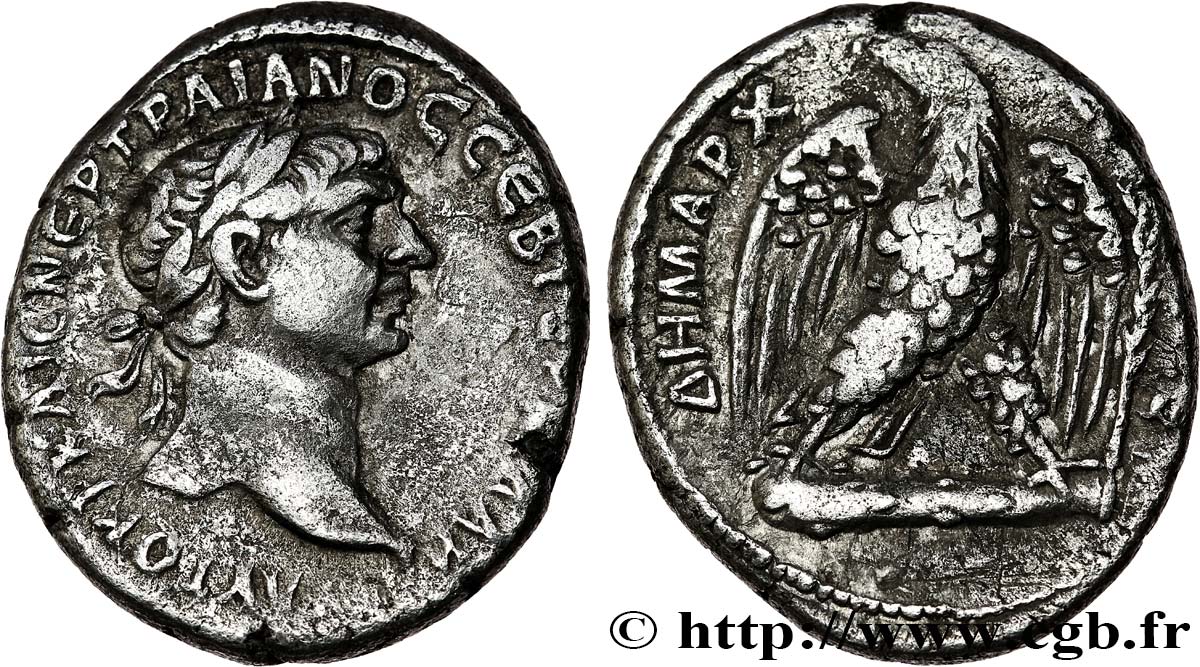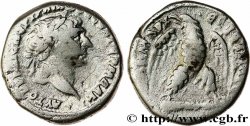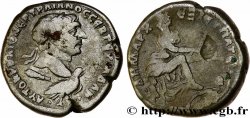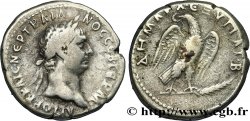bpv_720665 - TRAJANUS Tétradrachme syro-phénicien
175.00 €(Approx. 204.75$ | 152.25£)
Quantity
Add to your cart

Type : Tétradrachme syro-phénicien
Date: 103-109
Mint name / Town : Tyr, Phénicie
Metal : silver
Diameter : 27,5 mm
Orientation dies : 6 h.
Weight : 14,11 g.
Rarity : R1
Coments on the condition:
Exemplaire sur un flan large et ovale, un peu court sur la légende de revers. Belle tête de Trajan. Usure un peu plus marquée au revers. Patine gris métallique
Catalogue references :
Obverse
Obverse description : Tête laurée de Trajan à droite (O*).
Obverse legend : .AUTOKR KAIS NER TRAIANOS SEB GERM DAK., (Autokrator Kaisar Neruaos Traianos Sebastos Germanikos Dakikos)
Obverse translation : (L'empereur césar Nerva Trajan auguste germanique dacique).
Reverse
Reverse description : Aigle debout de face sur une massue, manche à droite, les ailes déployées, la tête tournée à gauche .
Reverse legend : DHMARC. .EX. UPAT. E., (Dhmarcikhs Exousias Upatos e)
Reverse translation : (Puissance tribunitienne, consul pour la cinquième fois).
Commentary
Rubans de type 3.
Type 3 ribbons
Type 3 ribbons








 Report a mistake
Report a mistake Print the page
Print the page Share my selection
Share my selection Ask a question
Ask a question Consign / sell
Consign / sell
 Full data
Full data










